PreDC User Guide
Xuetong Chen*
Lab of Systems Pharmacology, Center of Bioinformatics, College of Life Science, Northwest University, China.
* Email: xuetongchen@hotmail.com
Parameter Information
1) Drugbank ID
Drugbank ID is the accession number of a durg in the DrugBank database (http://www.drugbank.ca/).
Example: Caspofungin; DB00520
2)CAS Numbers
CAS Numbers are unique numerical identifiers assigned by the Chemical Abstracts Service to every chemical substance described in the open scientific literature (currently including those described from at least 1957 through the present), including organic and inorganic compounds, minerals, isotopes, alloys and nonstructurable materials (UVCBs, of unknown, variable composition, or biological origin).
Example: Acetic acid glacial; 64-19-7
3)ATC code
The Anatomical Therapeutic Chemical (ATC) Classification System is used for the classificationof drugs. This pharmaceutical coding system divides drugs into different groups according to the organ or system on which they act and/or their therapeutic and chemical characteristics. Each bottom-level ATC code stands for a pharmaceutically used substance, or a combination of substances, in a single indication (or use). This means that one drug can have more than one code: acetylsalicylic acid (aspirin), for example, has A01AD05 as a drug for local oral treatment, B01AC06 as a platelet inhibitor, and N02BA01 as an analgesic and antipyretic. On the other hand, several different brands share the same code if they have the same active substance and indications.
Example: Furosemide
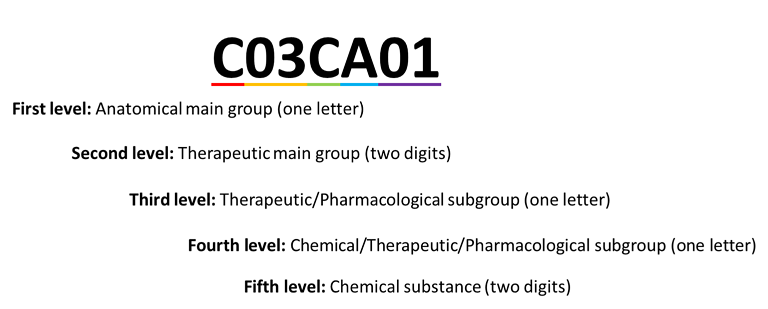
The first level of the code has 14 main groups:
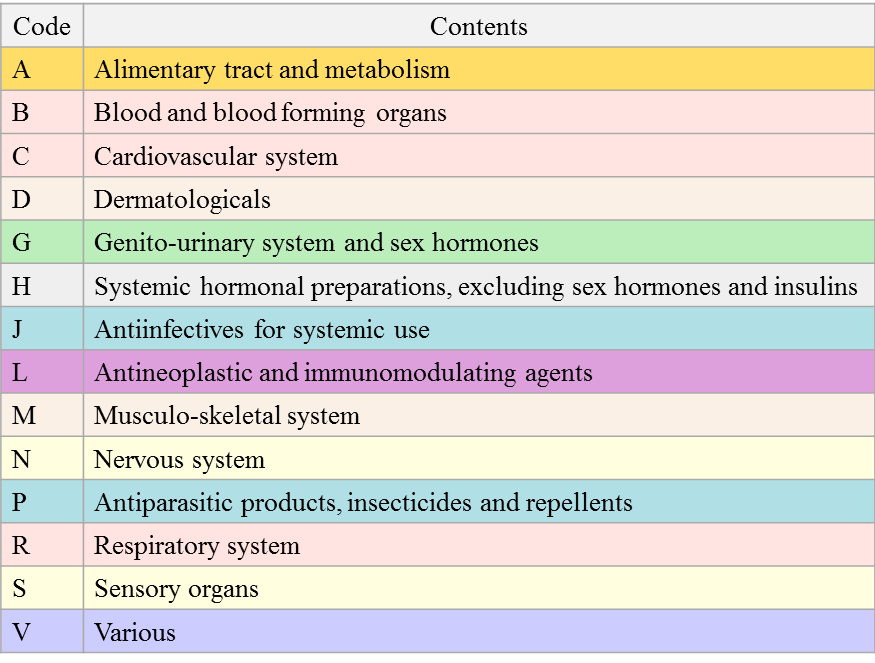
4)Uniprot ID
Uniprot ID is unique identifier to the protein from the UniProt Knowledgebase (UniProtKB:http://www.uniprot.org/) which is the central hub for the collection offunctional information on proteins, with accurate, consistent and richannotation.
Example: Cytosolic phospholipaseA2; P47712
5) Side Effect
A side effect isan effect, whether therapeutic or adverse, that is secondary to the oneintended; although the term is predominantly employed to describe adverseeffects, it can also apply to beneficial, but unintended, consequences of theuse of a drug. The side effect of drug obtains its data from the database of SIDER (http://sideeffects.embl.de/).
Example: Inflammation
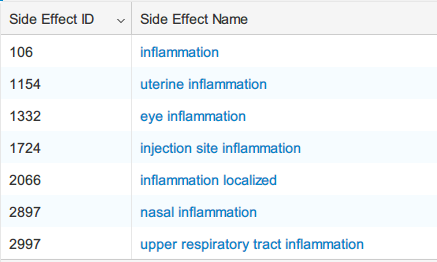
Search Principle
PreDC has 7 search options (Fig. 01), which allows users to query drugs (by Drug Name, DrugBank ID, CAS Number and ATC code options), targets (by Target Name and Uniprot ID options) and side effect (by Side Effect option).
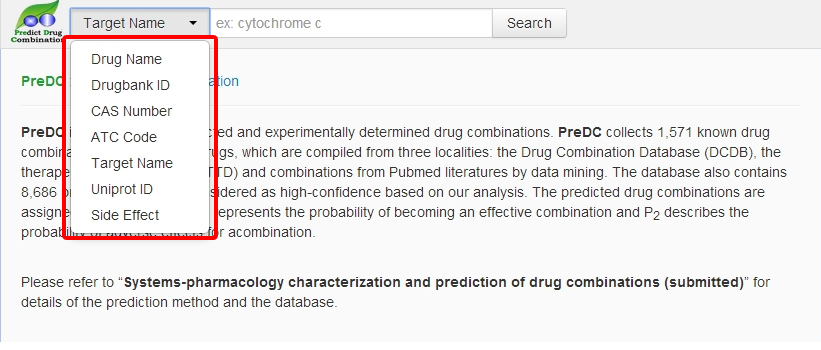
Fig. 01
1)Querying Drugs by Drug Name, DrugBank
ID, CAS Number and ATC code options
Here we input "acid"as the query key words. Search results will show as a table (Fig. 02).
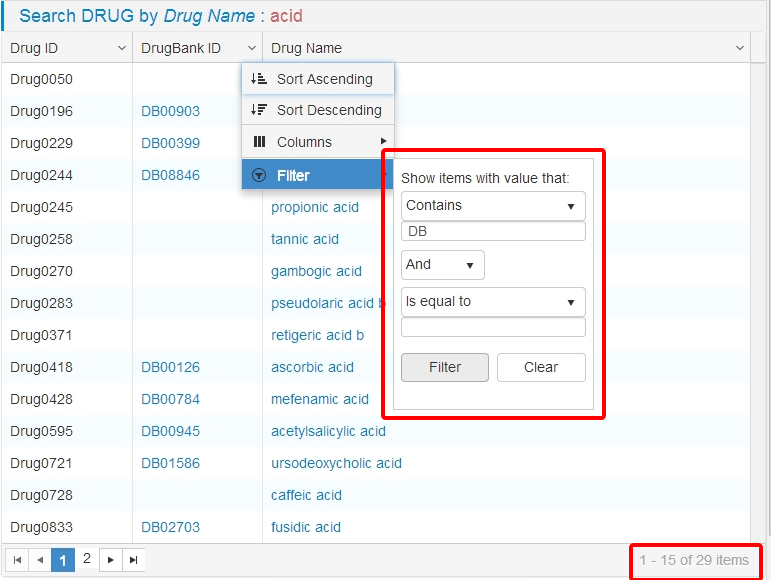
Fig. 02
As a result, there are 29 drugs contain "acid" in their name. The most powerful function of PreDC is that it allows users to filter the search result by user customized conditions. For example, by clicking the filter icon  at the top of each column, a tool box will show and various conditions could be filled and implemented. Here we select "Contains" and input DrugBank ID "DB", then click the "Filter" button, result will show as Fig. 03:
at the top of each column, a tool box will show and various conditions could be filled and implemented. Here we select "Contains" and input DrugBank ID "DB", then click the "Filter" button, result will show as Fig. 03:
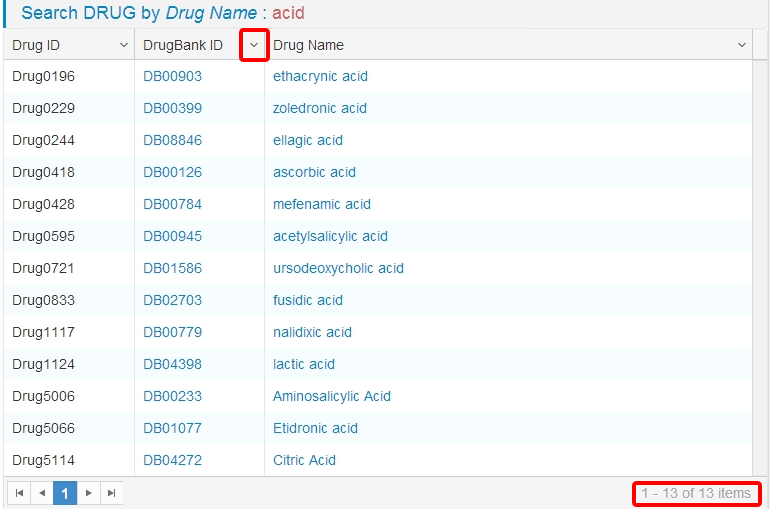
Fig. 03
Now we get only 13 drugs that satisfied the condition. The second column "DrugBank ID" is a reference link to Drugbank database (http://www.drugbank.ca/), from which users can obtain more information about the corresponding drug. Click the “Drug Name” of a drug will open its "Drug Information" page. Here we choose “ethacrynic acid” as an example. The “Drug Information” page of “ethacrynic acid” shows as Fig. 04 (Fig. 04 full version of this table can be reached at/predc_drug.php?qd=Drug0196):

Fig. 04
Notice that this “Drug Information” page consists of 4 major categories (Identifier, Combination, Related Targets and Side Effect). Every table in these pages could provide more information by clicking the cell in the table. The result will show as Fig. 05, Fig. 06 and Fig. 07:
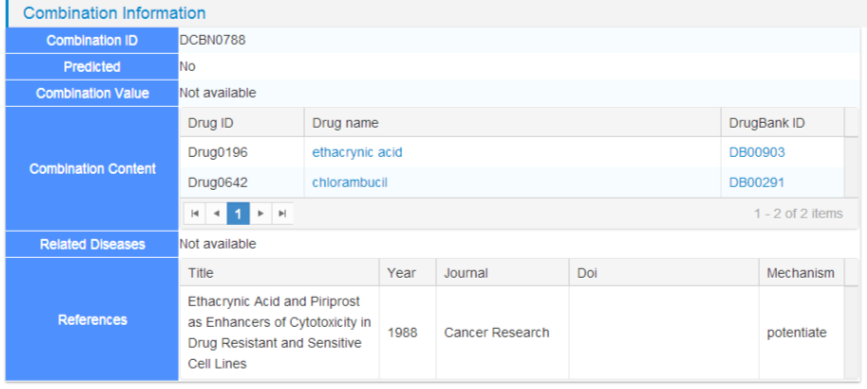
Fig. 05
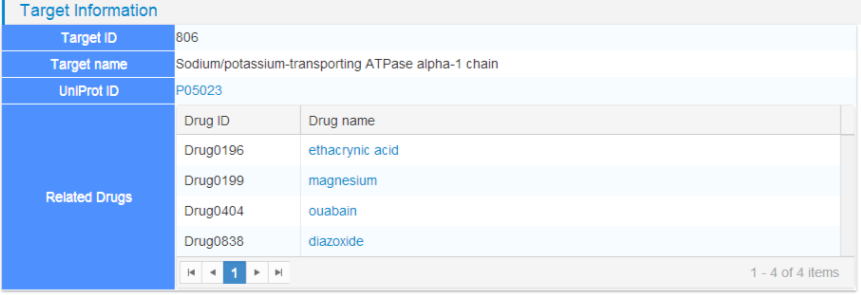
Fig. 06

Fig. 07
Querying by DrugBank ID, CAS Number and ATC code are the same as querying by Drug Name. For example, Change thesearch option to "DrugBank ID", input "DB00903" in thesearch box and then press "Search" button. Search results will showin a table (Fig. 08).

Fig. 08
Click the “Drug Name” will open its “Drug Information” page of Drug “DB00903” like before (Fig. 04).
2)Querying targets by Target Name and UniProt ID options:
Here we search "Sodium" as an example. Change the search option to "Target Name", input "Sodium" in the search box and then press "Search" button. Search results will show in a table (Fig. 09).
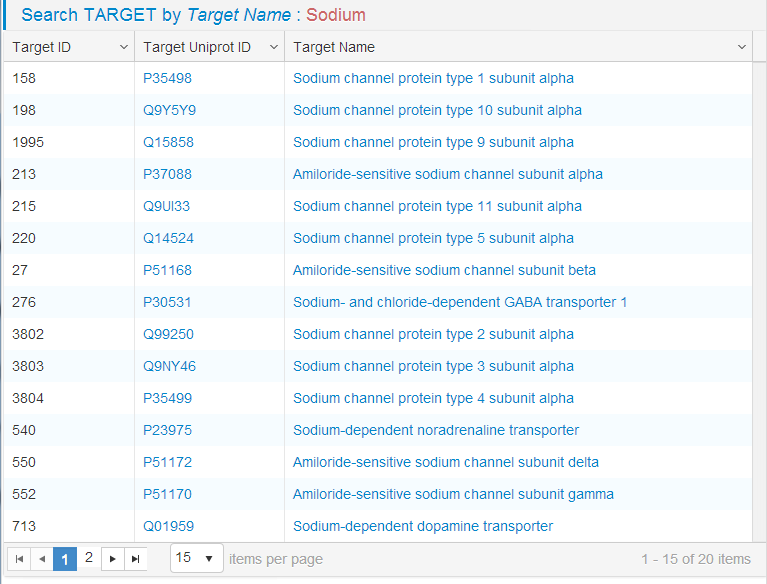
Fig. 09
As a result, there are 20 targets contain "Sodium" in their name. The second column "Target UniProt ID" is a reference linkto UniProt database (http://www.uniprot.org/), from which users can obtain more information about the corresponding target. Click the "Target Name" of a target will open its "Target Information" page. Here we choose "Sodium channel proteintype 1 subunit alpha" as an example. The "Target Information" page of "Sodiumchannel protein type 1 subunit alpha" shows as Fig. 10:

Fig. 10
The "Target Information" page shows the information of a target. Including it Target ID in PreDC, Target name, UniProt ID and Related Drugs.
Querying by Uniprot ID is the same as querying by Target Name. For example, Change the search option to "Uniprot ID ", input "P35498" in the search box and then press"Search" button. Search results will show in a table (Fig. 11).

Fig. 11
Click the Target Name link will open the "Target Information" page of target "Sodium channel protein type 1 subunit alpha" like before (Fig. 10).
3)Querying side effect by Side Effect options:
Example: Change the search option to "Side Effect ",input "Inflammation" in the search box and then press"Search" button. Search results will show in a table (Fig. 12).
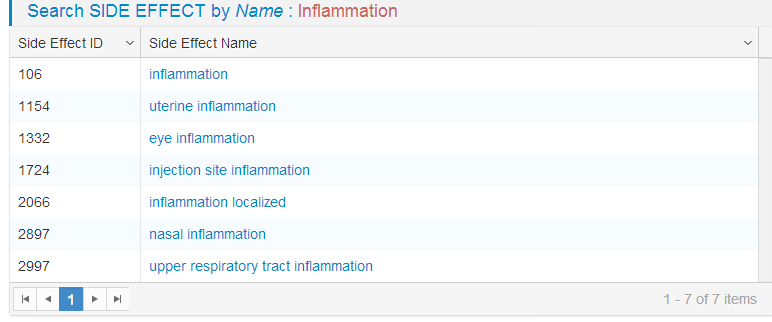
Fig. 12
Clicking "Side Effect Name" link in the second column will openthe "Side Effect Information". Here we choose the "inflammation" as an example (Fig. 13 full version of this table can be reached at /predc_seft.php?qsef=106).
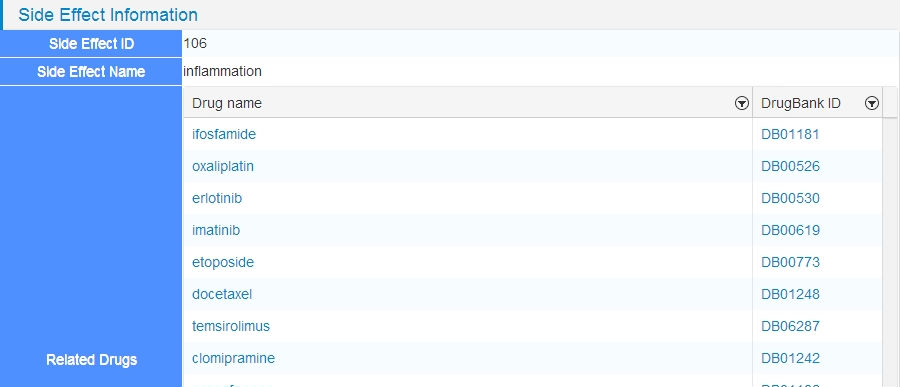
Fig. 13
The "Side Effect Information" page shows the Side Effect ID in PreDC, Side Effect Name and Related Drugs.
Drug combination prediction online
Now, our webserver is hard to afford the computational load and complexity of large amounts of online computing tasks, to make users predict new drug combinations using PreDC algorithm, users can send drug data in the right format to us for drug combination prediction. The information for these drugs include chemical structure, ATC, Side effect, and corresponding protein targets.